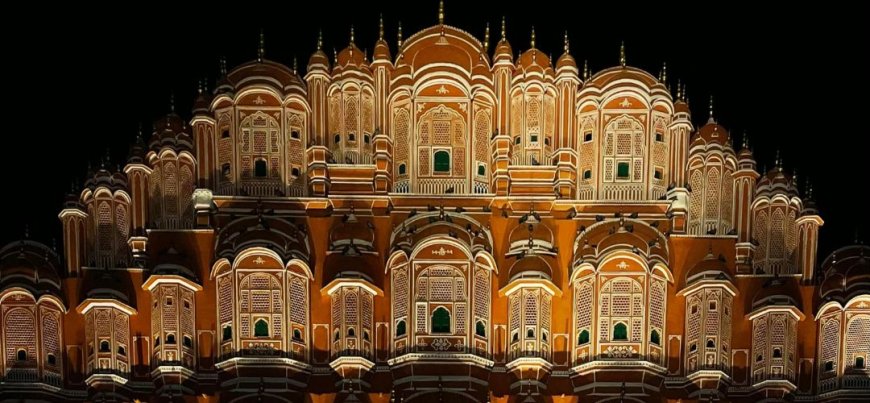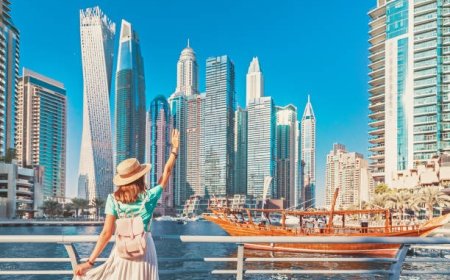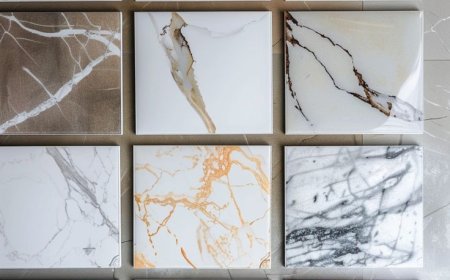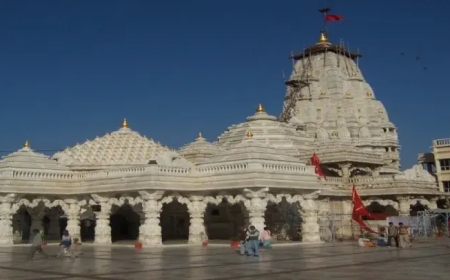Explore the Royal Beauty of Hawa Mahal Jaipur in Rajasthan
Discover the majestic charm of Hawa Mahal Jaipur, a timeless architectural wonder in Rajasthan, known for its unique design, rich history, and cultural significance.

Standing proudly in the heart of the Pink City, Hawa Mahal Jaipur is one of the most iconic and celebrated monuments in India. With its stunning pink sandstone faade and intricate latticework windows, this five-storey structure is not only a visual marvel but also a symbol of royal elegance and historical richness. Built in 1799 by Maharaja Sawai Pratap Singh, the palace was designed by Lal Chand Ustad in the form of Lord Krishnas crown, reflecting both religious reverence and architectural brilliance.
Jaipur, known as the Pink City, boasts many historical sites, but the Hawa Mahal holds a special place due to its unique purpose and breathtaking beauty. It was constructed as an extension of the City Palace, specifically intended to allow royal women to observe everyday life and festivals in the streets below without being seen by the public.
The Design That Speaks Volumes
The structure of Hawa Mahal is a remarkable blend of Rajput and Mughal architecture. The faade, which resembles a honeycomb, features 953 tiny windows, known as jharokhas, intricately decorated with latticework. These windows served a dual purpose ensuring complete privacy for the royal women and allowing cool air to flow through, which kept the palace comfortable during Jaipurs hot summers. This natural air conditioning system is what gave the palace its name Hawa Mahal, or the Palace of Winds.
What makes the design even more fascinating is that the palace does not have a direct entrance from the front. Visitors must enter through the City Palace and navigate their way through the inner courtyard to reach it. Despite its towering height, the palace is extremely narrow, built primarily for viewing rather than living. Inside, there are narrow passages, sloped ramps, and small chambers that once echoed with royal whispers.
A Peek into Royal Life
The Hawa Mahal stands as a testament to the strict purdah system of ancient Rajasthan, which prohibited women from appearing in public without a veil. To maintain their modesty while still engaging with the vibrant life outside, the royal ladies used the windows of Hawa Mahal to watch street processions, fairs, and day-to-day city happenings.
This practice highlights the blend of progressiveness and tradition in Rajput society. The palace allowed women to remain part of the social fabric while adhering to cultural norms of the time. Through its countless windows, they witnessed the ever-changing world beyond the palace walls colorful markets, festive parades, and cultural events all without stepping outside.
Hawa Mahal and Jaipurs Identity
No image of Jaipur is complete without the backdrop of the Hawa Mahal. It is not just a monument but an identity that defines the citys historical and cultural legacy. The pink sandstone exterior blends perfectly with the rest of the city's architecture, maintaining the regal aura that Jaipur is famous for.
Located at the intersection of the bustling Badi Chaupad, the palace draws thousands of tourists and photography enthusiasts every year. The view from the top of the Hawa Mahal offers a spectacular panorama of the city, with views of the Jantar Mantar, City Palace, and even Nahargarh Fort in the distance. For locals, its a daily sight that never loses its charm, and for visitors, its a memory etched forever.
Inside the Palace of Winds
While the outer faade often steals the spotlight, the interior of Hawa Mahal is equally captivating. Though relatively simple, it reflects the elegance of minimalistic royal design. The walls are painted in delicate shades, with motifs and carvings that mirror the opulence of Rajput royalty. Sunlight filters through the latticed windows, casting beautiful patterns on the floors and creating a magical ambiance throughout the day.
There are no elaborate rooms or halls within only narrow corridors and passages that lead to small viewing chambers. These features, while modest, give visitors a true sense of how the royal women would have experienced their surroundings. Theres also a small museum within the complex that displays relics, miniature paintings, and ceremonial armor from the bygone era.
Best Time to Visit and Travel Tips
If you plan to explore Hawa Mahal Jaipur, the best time to visit is during the early morning hours. The golden rays of the morning sun falling on the pink sandstone create a stunning visual thats perfect for photographs. Also, mornings are less crowded, allowing you to enjoy the serene charm of the palace in peace.
Try to visit between October and March when the weather in Jaipur is pleasant. Summers can be extremely hot and may affect your overall experience. Wear comfortable shoes, carry water, and be ready to climb a few narrow ramps if you want to reach the upper levels of the palace.
There is a small entry fee for Indian and foreign tourists, and guides are available at the entrance if you wish to learn more in depth about the history. Dont forget to explore the nearby markets, where you can buy local handicrafts, textiles, and jewelry as souvenirs of your royal visit.
Hawa Mahal: A Symbol of Rajasthans Grandeur
As you stand before the towering faade of the Hawa Mahal Rajasthan, you cannot help but be transported to an era of grandeur, grace, and royal mystique. The palace is not just a tourist destination; it is a living piece of history that continues to echo the stories of the past.
Its delicate design, cultural importance, and architectural uniqueness make it one of the most treasured monuments in India. More than two centuries since its construction, the Hawa Mahal still commands admiration and awe from all who behold it. Whether you're a history buff, a culture enthusiast, or simply a traveler seeking beauty, the palace offers something special a moment of quiet connection with a majestic past.
From its silent corridors to the whispering winds that still dance through its windows, Hawa Mahal remains a tribute to Jaipurs royal heritage and Indias architectural ingenuity. Visiting it isnt just a journey to a monument; its a journey into the soul of Rajasthan itself.






































